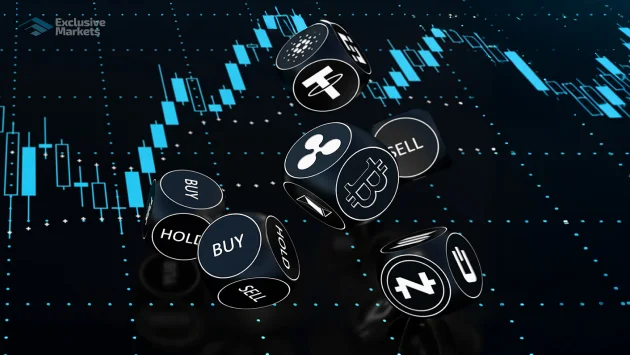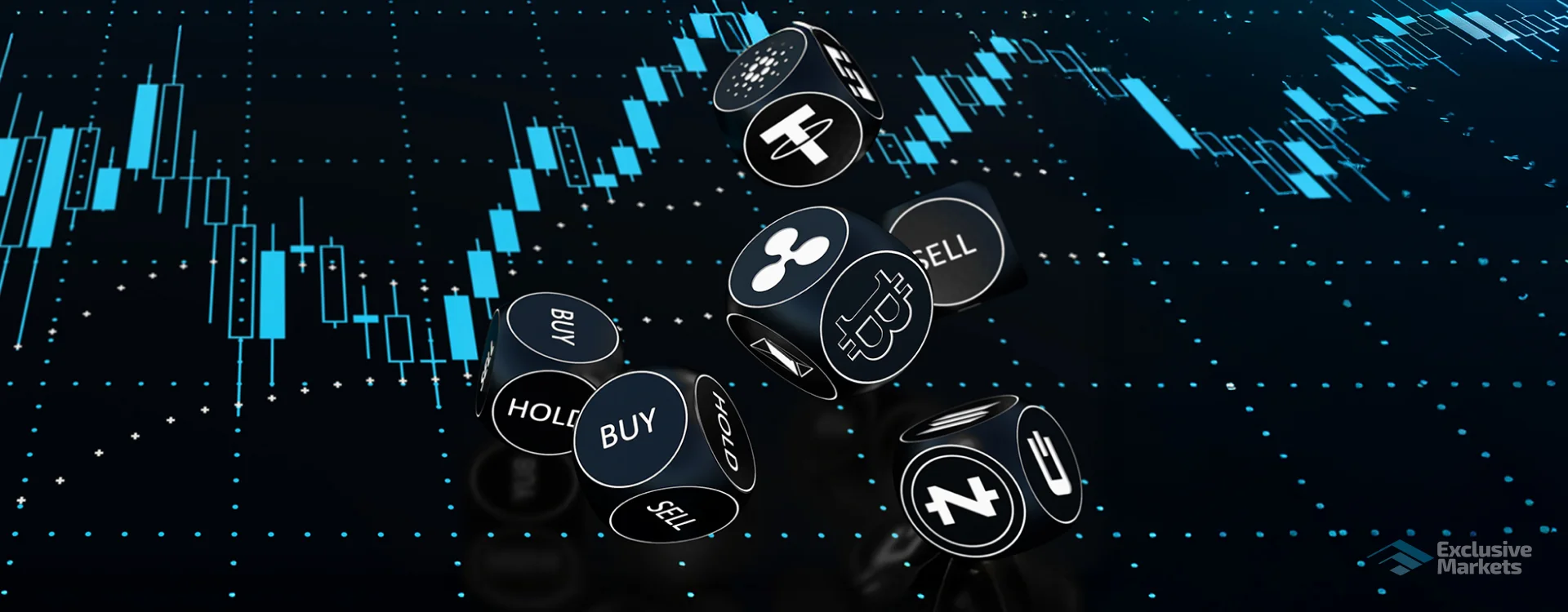
Table of Content
In a market that operates 24/5, countless factors, ranging from economic data releases and geopolitical events to central bank announcements, can trigger price discrepancies. Even if they last for just a fraction of a second, they can create an opportunity for traders to capitalise on these fleeting differences through arbitrage trading.
No matter if you are an experienced trader or someone new to the world of currency trading, understanding arbitrage trading can provide valuable insights and potential opportunities.
In this guide, we’ll break down arbitrage trading in forex, its different strategies, how to execute them, and why some traders swear by this method for strategies that may offer favourable risk-reward opportunities.
So, let’s dive!
What is Arbitrage Trading?
At its core, arbitrage trading is a simple concept that involves taking advantage of price inefficiencies in the market.
In the context of forex, arbitrage occurs when there is a discrepancy in the exchange rate of a currency pair between two or more markets. This can happen due to several factors, such as differences in liquidity, timing of price updates, or even market sentiment.
The idea is straightforward, involving buying low in one market and selling high in another, exploiting the price difference. Under perfect conditions, this can present a low-risk profit opportunity.
Types of Arbitrages in Forex
Arbitrage in the forex market can take different forms, each with its unique set of risks and potential rewards. Let’s look at the most common types of arbitrage strategies:
-
Spatial Arbitrage
Spatial arbitrage involves exploiting the price difference of a currency pair between two or more different forex brokers or platforms. These price differences can arise because each broker might update their quotes at slightly different times or based on varying liquidity pools.
The discrepancy is often a fraction of a pip, but when traded in large volumes, it can become highly profitable.
For example, if there are two brokers, Broker A and Broker B, and Broker A offers EUR/USD at 1.1010 while Broker B quotes EUR/USD at 1.1012. Then, a trader can simultaneously buy EUR/USD on Broker A and sell EUR/USD on Broker B, capturing the 2 Pip difference as profit.
This type of arbitrage depends on low-latency connections and can be highly profitable if executed swiftly. However, it requires advanced technological setups and rapid execution to capitalise on fleeting opportunities.
-
Triangular Arbitrage
Triangular arbitrage involves three currency pairs in a single transaction. A trader exploits the differences in cross-currency exchange rates by buying and selling different currency pairs within the same market.
Here is how it works:
- Step 1: The trader begins by converting their base currency (for example, USD) into a second currency (for example, EUR).
- Step 2: Next, the trader uses the EUR to purchase a third currency (such as GBP).
- Step 3: Finally, the trader converts the GBP back to USD.
If the calculated exchange rate of the three trades is more favourable than the current exchange rate between the three currencies, there is an arbitrage opportunity.
For instance, let’s consider-
EUR/USD = 1.1000
GBP/USD = 1.3000
GBP/EUR = 1.2000
In this case, a trader could buy EUR/USD, then convert it into GBP using the GBP/EUR rate and ultimately trade the GBP back to USD at a profit.
Triangular arbitrage opportunities often arise when there are discrepancies in the quoted exchange rates of major currency pairs. This type of arbitrage doesn’t require the trader to leave a single trading platform, but again, speed and technology are key to success.
-
Statistical Arbitrage
Statistical arbitrage is a more complex and systematic form of arbitrage that utilises mathematical models and algorithms to predict and capitalise on market inefficiencies. This strategy involves analysing large sets of data to identify patterns in price movements and historical correlations between currency pairs.
The core assumption is that if two currency pairs are historically correlated, any temporary deviation from their historical relationship can present an arbitrage opportunity. Once the model detects such a deviation, it can trigger an automated trade to lock in profits when the prices revert back to their historical relationship.
For example, the EUR/USD and GBP/USD currency pairs have historically moved in a correlated manner. If the EUR/USD deviates from its historical price relationship with GBP/USD, an algorithm will automatically buy or sell based on the perceived price correction.
Statistical arbitrage relies heavily on historical data and sophisticated algorithms, making it more suitable for institutional traders and quantitative hedge funds rather than for beginners or those without advanced resources.
-
Temporal Arbitrage
Temporal arbitrage takes advantage of timing differences in the pricing of currency pairs across different time zones or forex trading sessions. Forex markets operate 24 hours daily across various global financial centres, such as London, New York, and Tokyo. During transitions between sessions, temporary price inefficiencies can occur.
For example, if the Tokyo session closes with USD/JPY trading at 145.20, but due to economic news released in the London session, the price quickly adjusts to 145.50, a trader monitoring these shifts could enter a position before the adjustment fully occurs across all platforms.
This form of arbitrage requires constant monitoring of global market hours, economic calendars, and news feeds. Traders need to act quickly, as the window of opportunity is often very narrow and may close before a trade is executed.
-
Risk Arbitrage (Merger Arbitrage)
Though more common in equity and M&A markets, a variation of risk arbitrage can apply to forex markets when companies or financial institutions engage in cross-border mergers and acquisitions. In such cases, a trader may speculate on the currency movements resulting from anticipated capital flows or hedge the associated forex exposure.
For instance, if a European company announces its intention to acquire a U.S. firm, the expectation may be that the European company will need to buy a large amount of USD. Traders might take positions in EUR/USD based on expected demand changes.
However, this strategy involves significant uncertainty, as the results of the trade hinge on the merger being completed as expected, on time, and with the predicted currency flow impact.
This type of arbitrage is speculative in nature and is more suitable for experienced traders with access to macroeconomic analysis and institutional data. Also, it may not be appropriate for retail investors.
-
Convertible Arbitrage
Convertible arbitrage involves exploiting pricing inefficiencies between a convertible financial instrument (like convertible bonds) and the underlying asset or currency exposure. In forex, this might involve instruments issued in one currency but convertible into another, such as foreign currency-denominated corporate bonds.
A trader may, for example, take a long position in the convertible bond while shorting the related currency or equity to hedge the position, aiming to profit from the pricing discrepancy.
In practice, this requires a sophisticated understanding of fixed income instruments, currency risk, and interest rate differentials. It is commonly used by hedge funds and institutional traders rather than retail investors.
How does Arbitrage Trading Work in Forex?
While the basic principles of arbitrage trading in forex might seem simple, executing it requires a deep understanding of the market dynamics, timing, and technology.
Here’s a step-by-step overview:
-
Step 1: Identifying Opportunities
Arbitrage opportunities arise when there are price discrepancies in currency pairs between different brokers, exchanges, or even within the same platform. Advanced tools, algorithms, and trading bots are often used to detect these differences quickly, as they tend to last for mere seconds.
-
Step 2: Fast Execution
Speed is crucial in exploiting arbitrage opportunities. Since forex prices change rapidly, traders need to execute trades immediately before the price discrepancy disappears.
-
Step 3: Locking in Potential Profits
Once the trades are executed, the trader may realise a profit if all conditions align, though there is no guarantee. This profit typically comes from the small spread between buying and selling prices or the slight differences in quotes.
-
Step 4: Scaling Up
Arbitrage is a game of volume. To generate substantial profits, traders need to execute multiple arbitrage trades over a short period, capitalising on numerous small price discrepancies. Automated systems and high-frequency trading (HFT) algorithms are often used by professional arbitrage traders to scale up and trade at lightning speed.
What are the Advantages of Arbitrage Trading?
Here are some of the advantages of arbitrage trading:
- Potentially lower risk: Arbitrage trading is considered relatively low risk compared to directional trading because it relies on exploiting price discrepancies in different markets rather than predicting market trends. Once an opportunity is spotted, traders can potentially secure a profit if executed correctly. However, execution, liquidity, and operational risks still apply.
- Potential for more consistent returns: Given the consistent nature of price inefficiencies, arbitrage can generate predictable and steady profits. Institutional traders often view this as a reliable income source, although profits are not guaranteed and can vary.
- Market efficiency: Arbitrage helps improve market efficiency by quickly correcting price disparities, which brings prices closer to their true value.
What are the Challenges and Risks?
Along with the advantages, it also possesses certain challenges and risks that traders must be aware of. Some of them are:
- Execution speed: Arbitrage opportunities often disappear in milliseconds. Latency issues or delays in order execution can lead to missed opportunities.
- Transaction costs: While arbitrage is theoretically low-risk, spreads, commissions, and fees can reduce profits, especially when they are high.
- Capital requirements: Individual traders may need substantial capital to exploit opportunities effectively, while institutional traders can leverage large volumes.
- Market competition: As high-frequency trading (HFT) and algo trading grow, arbitrage has become highly competitive, with institutions dominating and retail traders facing significant challenges.
Is Arbitrage Trading Right for You?
Arbitrage trading in forex offers an exciting opportunity for traders who are looking for opportunities with potentially favourable risk-reward profiles. While it may seem like an easy way to profit, the execution of arbitrage strategies is far from straightforward.
It requires advanced technology, quick reflexes, and a deep understanding of market mechanics.
For individual traders, entering the world of arbitrage can be challenging due to competition from institutions, technological barriers, and high capital requirements. However, for those who have the resources or the right tools (like arbitrage bots or automated trading systems), it remains an intriguing option to explore.
It is best suited for those who have the necessary tools, knowledge, and risk appetite to make the most of the fleeting opportunities that arise in the forex market.
Conclusion
To conclude, arbitrage trading in forex is a compelling strategy built on logic, speed, and precision. Rather than predicting market direction, it exploits short-lived price inefficiencies, gaps that even the most efficient financial systems cannot fully eliminate. Whether through spatial arbitrage across brokers, triangular arbitrage within currency pairs, or algorithms driven by statistical arbitrage, the potential for profit lies in timely execution and smart strategy.
However, it’s important to recognise that arbitrage is not a guaranteed win and requires accepting the possibility of losses alongside potential gains. Additionally, it demands fast execution, advanced tools, and an understanding of how markets behave on a microsecond level.
In a highly competitive market like forex, arbitrage trading stands out as a method that reflects how deeply interconnected and dynamic global currencies are. While it may not suit every trader, those willing to invest in technology, stay vigilant, and act quickly can make arbitrage a powerful addition to their trading toolkit.
Are you Ready to Explore the World of Trading?
Disclaimer: The information provided on this blog is for educational/informational purposes only and should not be considered financial/investment advice. Trading carries a high level of risk, and you should only trade with capital you can afford to lose. Past performance is not indicative of future results. We do not guarantee the accuracy or completeness of the information presented, and we disclaim all liability for any losses incurred from reliance on this content.

 1602
1602 08-10-2025
08-10-2025